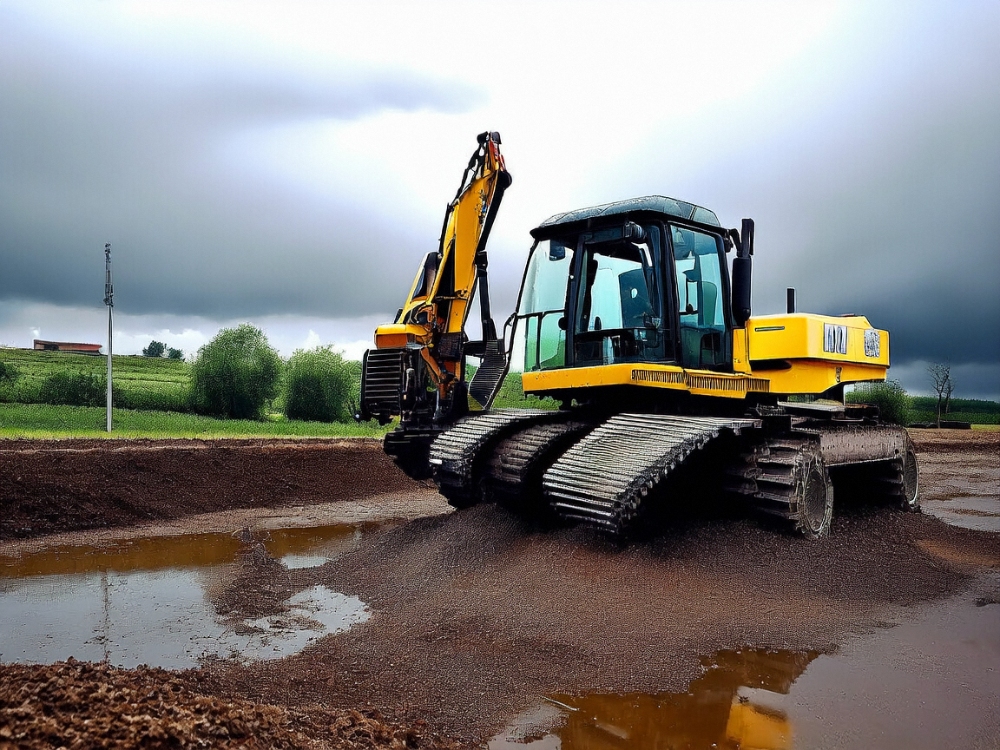Recommend Products
-
$14,000$15,000
-
$18,000$19,000
-
$19,000$21,000
-
$62,000$66,000
Excavators are complex machines in the construction industry. While their basic working principle is simple, many people are unfamiliar with the specific roles of each part of the excavator. Particularly, understanding common malfunctions and the maintenance of wear parts is essential to improving efficiency and minimizing downtime. Excavators are critical for earthmoving, mining, and other projects, and their efficiency and stability are determined by the interplay of various components and parts. For operators and maintenance personnel, it is vital to understand the key components of the excavator, their functions, and the wear parts that require regular attention to keep the equipment running smoothly. In this article, we will examine the key components and common wear parts of excavators to help you better understand their operational principles and maintenance requirements.
1. Key Components of an Excavator
1.1 Engine
The engine is the powerhouse of the excavator, typically powered by diesel. It converts the chemical energy of fuel into mechanical energy, driving the hydraulic pump and other components to ensure the excavator’s functionality. The engine plays a pivotal role in the machine’s operational efficiency, fuel economy, and load-bearing capacity.
Key Function: Provides power for the hydraulic system and controls machine operation.
Common Issues: Excessive fuel consumption, overheating.
1.2 Hydraulic System
The hydraulic system is at the heart of the excavator's power transmission. It uses pressurized hydraulic oil to push the hydraulic cylinders, controlling the movement of the working components such as the boom, arm, and bucket. The main parts of the hydraulic system include the hydraulic pump, cylinders, and valves.
Key Function: Transmits power and controls the movement of working parts.
Common Issues: Hydraulic oil leaks, hydraulic system noise.
1.3 Working Device
The working device consists of the boom, arm, and bucket, which are the core components responsible for tasks such as digging, loading, and demolition. These components are controlled by the hydraulic system and are capable of performing multiple operations under various conditions.
Key Function: Perform digging and loading operations.
Common Issues: Bucket wear, looseness in the boom or arm.
1.4 Swing System
The swing system allows the upper structure of the excavator to rotate 360 degrees, providing flexibility when working in confined spaces. Components like the swing motor and swing bearing ensure smooth rotation of the upper structure.
Key Function: Enables free rotation of the upper structure.
Common Issues: Weak or stuck rotation, noise in the swing system.
1.5 Travel Device
The travel device is responsible for the excavator’s movement. Excavators come in two types: crawler-type (tracked) and wheeled. Crawler excavators are suited for rough terrain, while wheeled excavators are better for flat surfaces.
Key Function: Provides ground traction and supports movement.
Common Issues: Track loosening or derailment, tire wear.
1.6 Cab and Control System
The cab is the operator’s workspace, equipped with control levers, monitors, and various feedback systems. Through this system, operators can control the excavator’s various functions and receive real-time information about the machine’s status.
Key Function: Provides operational control and feedback.
Common Issues: Control system malfunction, cab vibrations.
1.7 Electrical System
The electrical system powers the excavator’s startup, lighting, dashboard, and other electronic components. It includes key components such as the battery, alternator, and control modules.
Key Function: Supplies power to electronic devices.
Common Issues: Battery drainage, short circuits.
2. Common Wear Parts and Their Maintenance
Under intense working conditions, certain parts of the excavator are prone to wear due to frequent use or environmental factors. Regular inspection and replacement of these wear parts can significantly extend the machine's lifespan and prevent malfunctions.
2.1 Bucket (Teeth and Cutting Edges)
The bucket is the most directly used part of the excavator, coming into constant contact with soil, rocks, and other materials. The bucket teeth help break up hard ground and rock, while the cutting edges are responsible for digging and slicing through the material.
Common Issues: Worn bucket teeth, damaged cutting edges.
Maintenance Tip: Regularly inspect the wear on the teeth and cutting edges, and replace them when necessary.

2.2 Tracks and Track Pads
The tracks and track pads support the excavator and help it move across various terrains. In harsh environments, such as muddy or rocky conditions, these parts experience significant wear.
Common Issues: Loose or derailed tracks, worn track pads.
Maintenance Tip: Regularly check track tension and track pad wear, and adjust or replace them as needed.

2.3 Hydraulic Hoses
Hydraulic hoses transport pressurized oil within the system. The high-pressure environment of the hydraulic system makes these hoses susceptible to aging and cracking, which can lead to oil leaks.
Common Issues: Aging hoses, oil leaks.
Maintenance Tip: Regularly inspect hoses for cracks or leaks and replace aging hoses promptly.

2.4 Swing Bearing
The swing bearing supports the rotation of the upper structure. With frequent use or heavy loads, the bearings and gears can wear out over time.
Common Issues: Stuck rotation, worn swing bearing.
Maintenance Tip: Lubricate the swing bearing regularly and check for gear wear. Perform maintenance or replacements as necessary.

2.5 Seals (O-Rings)
Seals, including O-rings, are used to seal various joints in the hydraulic system, preventing oil leaks. Over time, they can deteriorate due to prolonged exposure to high pressure.
Common Issues: Aged or cracked seals, oil leaks.
Maintenance Tip: Inspect and replace worn or damaged seals to ensure the hydraulic system remains leak-free.

2.6 Air and Fuel Filters
Air filters clean the air entering the engine, while fuel filters remove impurities from the fuel. Both can become clogged over time, especially when operating in dusty environments.
Common Issues: Clogged filters.
Maintenance Tip: Replace filters regularly, particularly in dusty or contaminated environments.
2.7 Boom and Arm Pins
Pins connect the boom, arm, and bucket. Continuous use can cause these pins to wear down or loosen, affecting the machine's precision.
Common Issues: Worn or loose pins.
Maintenance Tip: Check pin wear regularly and ensure proper lubrication.
Conclusion
The efficient operation of an excavator depends on the coordination of its key components and the timely maintenance of its wear parts. Understanding each component’s role and paying attention to the wear parts can significantly enhance the machine's performance, extend its lifespan, and reduce the likelihood of breakdowns. Proper maintenance ensures that the excavator remains reliable and continues to operate at optimal efficiency in demanding environments.